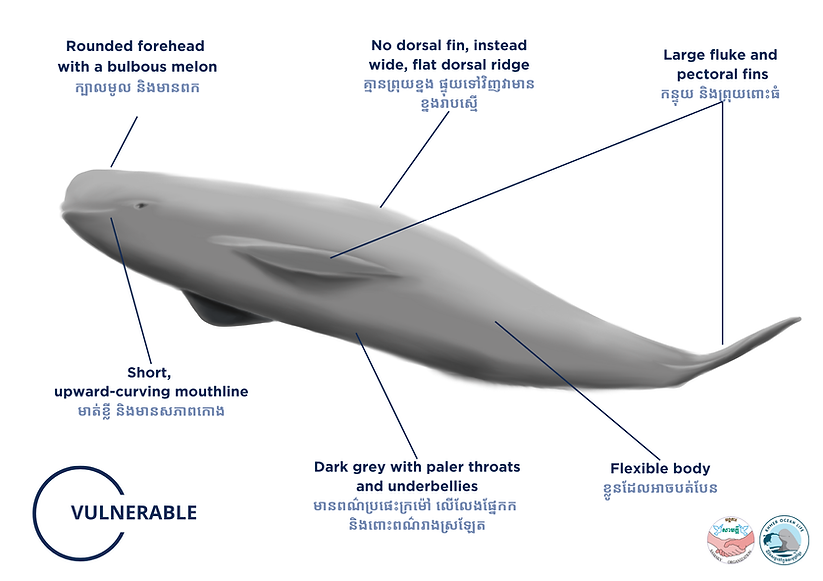Distribution
Widespread coastal population from the Persian Gulf, through SE Asia and North to Korea and Japan
Commonly occupy the same habitat as Irrawaddy Dolphins, inhabiting estuarine waters as well as mangrove forests.
Have been found 1600 km inland in the Yangtze river.
Studies being done by KOL to identify population and habitat of finless porpoise in cambodia

Description
Max size: adult male 170cm (70kg), newborns: 75cmFinless, beakless and extremely streamline
Dark grey with paler throats and underbellies
Wide-flat dorsal ridgeSteep rounded forehead with a bulbous melon - short mouthline curved upwards giving smiling appearance - relatively small eyes for animal size
Flexible body with large fluke and pectoral fins

Behaviour and Ecology
Usually sighted as trios or groups of up to 6; largest aggregation recorded around 50 individuals
Does not positively interact with boats - generally a shy species
Usually travels just below the surface of the water with erratic movements
Diet: very opportunistic feeders taking a range of benthic and surface dwelling fish, crustaceans and cephalopods
Main Threats
Water traffic
Heavy boat traffic and coastal disturbances affect porpoise health and distribution as porpoises are hypersensitive to boat noise and are extremely susceptible to vessel strikes
Bycatch
The largest threat to finless porpoise worldwide - thousands are caught every year in accidental bycatch; in some areas as a result are eaten or sold to captivity programs
Click here to learn more about our
Fun facts
Indo-Pacific finless porpoise show diverse regional differenced with the 2 other subspecies; the Yangtze and Chinese finless porpoise, differing in average size and colouration


